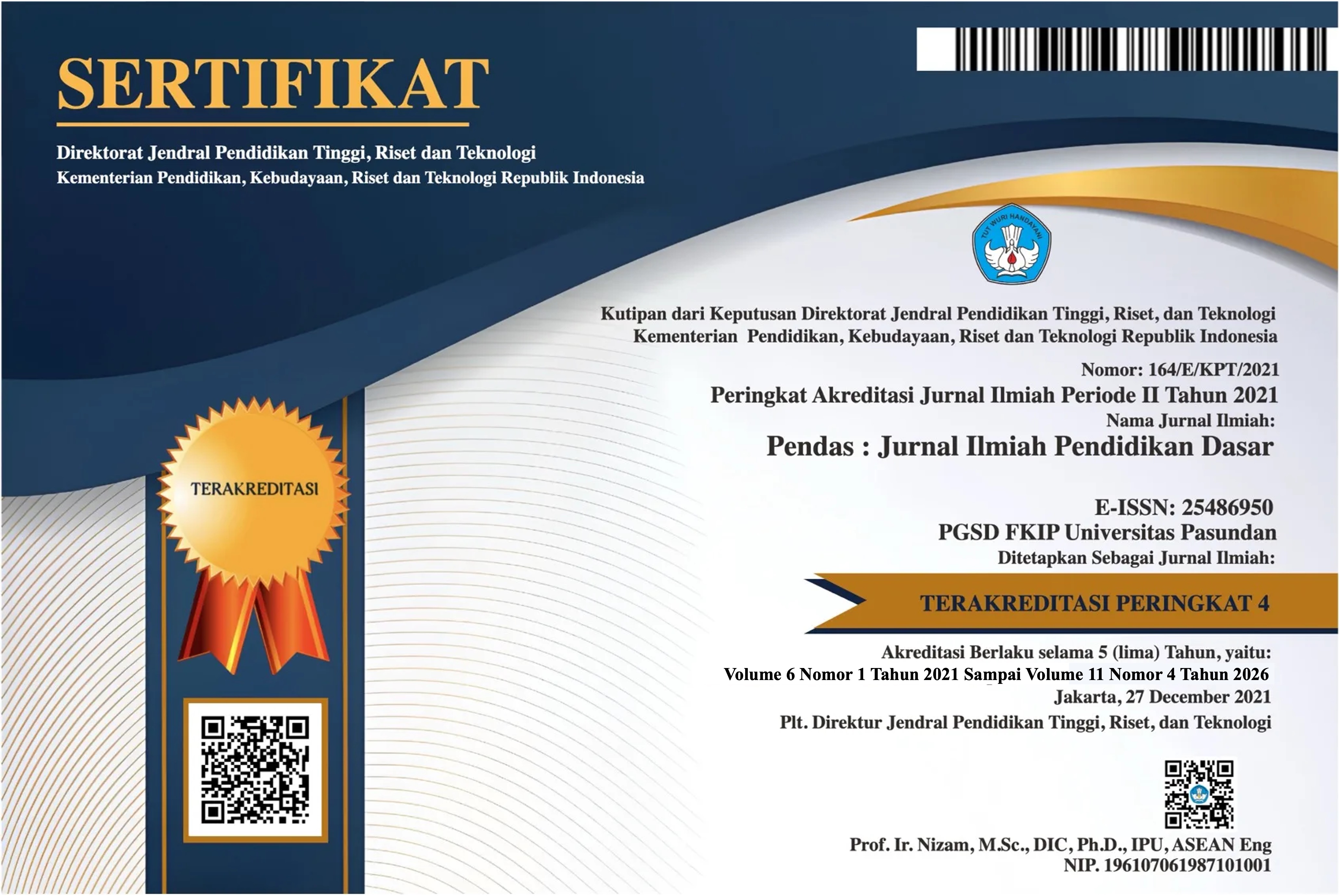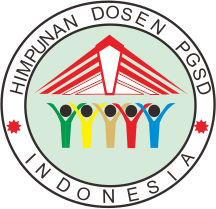OPTIMALISASI PEMANFAATAN SMART CLASSROOM MELALUI MODEL SAMR UNTUK MENINGKATKAN LITERASI DIGITAL MAHASISWA CALON GURU SD
DOI:
https://doi.org/10.23969/jp.v10i04.35950Keywords:
Smart Classroom, Digital Literacy, SAMRAbstract
The growing demand for technology integration in education requires prospective elementary school teachers to possess strong digital literacy competencies. However, prior research shows that their ability to utilize technology for pedagogical purposes remains limited, potentially hindering the quality of teaching practices in the digital era. This study employed a quasi-experimental design using a Nonequivalent Control Group Design to examine the impact of implementing the SAMR (Substitution, Augmentation, Modification, Redefinition) model within a Smart Classroom environment. Two groups participated: an experimental group that received SAMR-based instruction and a control group that experienced conventional teaching. Digital literacy was measured using a validated and reliable questionnaire. The findings demonstrate that students in the experimental group achieved a higher improvement in digital literacy scores compared to those in the control group. The integration of SAMR stages enabled a gradual transformation of learning activities—from simple digital substitution to innovative, redefined practices—resulting in more meaningful technology use. These results confirm the effectiveness of the SAMR model as a framework for optimizing Smart Classroom facilities to systematically enhance digital literacy. The study highlights the importance of embedding structured technology-integration models in teacher education programs to prepare future educators for 21st-century learning environments.
Downloads
References
Information Technologies, 28(8), 10459–10482. https://doi.org/10.1007/s10639-022-11537-z
Almulla, M. A. (2023). Constructivism learning theory: A paradigm for students’ critical thinking, creativity, and problem solving to affect academic performance in higher education. Cogent Education, 10(1). https://doi.org/10.1080/2331186X.2023.2172929
Amelia, D. J., & Ulumu, B. (2019). Literasi Digital di Kalangan Mahasiswa PGSD Universitas Muhamamdiyah Malang. Edumaspul: Jurnal Pendidikan, 3(2), 106–111. https://doi.org/10.33487/edumaspul.v3i2.144
Arantes, J. (2022). The SAMR model as a framework for scaffolding online chat: a theoretical discussion of the SAMR model as a research method during these “interesting” times. Qualitative Research Journal, 22(3), 294–306. https://doi.org/10.1108/QRJ-08-2021-0088
Boonmoh, A., & Kulavichian, I. (2023). Exploring Thai EFL pre-service teachers’ technology integration based on SAMR model. Contemporary Educational Technology, 15(4). https://doi.org/10.30935/cedtech/13567
Budiastuti, D. (2022). Validitas dan reliabilitas penelitian.
Creswell, J. W. (2022). Research Design: Qualitative, Quantitative, and Mixed Methods Approaches: by John W. Creswell and J. David Creswell, Los Angeles, CA: SAGE, 2018, $38.34, 304pp., ISBN: 978-1506386706. Taylor & Francis.
Dinata, K. B. (2021). Analysis of Students’ Digital Literacy Ability. Edukasi: Journal of Education, 19(1), 105–119. https://doi.org/10.31571/edukasi.v19i1.
Ginting, L. C., & Magistra, A. A. (2024). JPPD : Jurnal Pedagogik Pendidikan Dasar Membangun Guru Literat Digital : Analisis Kemampuan Literasi Digital Mahasiswa PGSD. 11(1), 40–51. https://doi.org/https://doi.org/10.17509/jppd.v11i1.70425
Gunarto, E., Huriyah, H., & Rosidin, D. N. (2023). Manajemen Pembelajaran Berbasis Smart Classroom untuk Meningkatkan Hasil Belajar Siswa SMA. JIEM (Journal of Islamic Education Management), 7(1), 63. https://doi.org/10.24235/jiem.v7i1.13295
Habibi, R. (2017). Perencanaan Sistem Smart Academic Dengan Smart Classroom Dan Teknologi Internet of Things Pada Stmik Bina Patria. Jurnal TRANSFORMASI, 13(1), 38–46.
Hamilton, E. R., Rosenberg, J. M., & Akcaoglu, M. (2016). The Substitution Augmentation Modification Redefinition (SAMR) Model: a Critical Review and Suggestions for its Use. TechTrends, 60(5), 433–441. https://doi.org/10.1007/s11528-016-0091-y
Li, B., Kong, S. C., & Chen, G. (2015). Development and validation of the smart classroom inventory. Smart Learning Environments, 2(1). https://doi.org/10.1186/s40561-015-0012-0
Muslimin, A. I., Mukminatien, N., & Ivone, F. M. (2023). TPACK-SAMR Based Lecturers’ Digital Literacy Competence and Its Implementation in EFL Classroom. Call-Ej, 24(3), 154–173.
Panjaitan, P. U., Putri, S. L., Ramadhani, A., & ... (2023). Analisis Pemanfaatan Literasi Digital Pada Mahasiswa PGSD Universitas Jambi Untuk Membantu Tugas Akhir. Innovative: Journal Of …, 3, 4332–4340. http://j-innovative.org/index.php/Innovative/article/view/5391%0Ahttp://j-innovative.org/index.php/Innovative/article/download/5391/3789
Ramadhanti, A., & Munjiatun. (2024). Analisis Kemampuan Literasi Digital dalam Menumbuhkan Minat Baca Mahasiswa PGSD FKIP UNRI. Jurnal Kiprah Pendidikan, 3(1), 57–72. https://doi.org/10.33578/kpd.v3i1.219
Rini, R., Suryadinata, N., & Efendi, U. (2022). Literasi digital mahasiswa dan faktor-faktor yang berpengaruh. Jurnal Akuntabilitas Manajemen Pendidikan, 10(2), 171–179. https://doi.org/10.21831/jamp.v10i2.48774
Sanders, K., Sheard, J., Becker, B. A., Eckerdal, A., Hamouda, S., & Simon. (2019). Inferential statistics in computing education research: A methodological review. ICER 2019 - Proceedings of the 2019 ACM Conference on International Computing Education Research, 177–185. https://doi.org/10.1145/3291279.3339408
Simamora, B. (2022). Skala Likert, Bias Penggunaan dan Jalan Keluarnya. Jurnal Manajemen, 12(1), 84–93. https://doi.org/10.46806/jman.v12i1.978
Sudrajat, S. (2025). The smart classroom: Exploring the impact of IoT on teaching dynamics using SVM algorithm. Indonesian Journal of Multidisciplinary Science, 4(5), 415–427. https://doi.org/10.55324/ijoms.v4i5.1101
Sugiyono, P. D. (2019). metode penelitian pendidikan (kuantitatif, kualitatif, kombinasi, R&D dan penelitian pendidikan). Metode Penelitian Pendidikan, 67.
Syathroh, I. L. (2022). TECHNOLOGY-INTEGRATION IN EFL CLASSROOM: Augmentation Language Learning Activities in Puentedura’s SAMR Framework. Braz Dent J., 33(1), 1–12.
Tunjera, N., & Chigona, A. (2020). Teacher Educators’ Appropriation of TPACK-SAMR Models for 21st Century Pre-Service Teacher Preparation. International Journal of Information and Communication Technology Education, 16(3), 126–140. https://doi.org/10.4018/IJICTE.2020070110
Yulia, N. A., Pasassung, N., Ekadayanti, W., & Ahmad. (2024). Analisis Kemampuan Literasi Digital Mahasiswa Baru Program Studi PGSD di Universitas Sulawesi Tenggara. Arus Jurnal Sosial Dan Humaniora, 4(1), 124–134. https://doi.org/10.57250/ajsh.v4i1.349
Zhang, M., & Li, X. (2021). Design of Smart Classroom System Based on Internet of Things Technology and Smart Classroom. Mobile Information Systems, 2021. https://doi.org/10.1155/2021/5438878
Downloads
Published
Issue
Section
License
Copyright (c) 2025 Pendas : Jurnal Ilmiah Pendidikan Dasar

This work is licensed under a Creative Commons Attribution 4.0 International License.


















